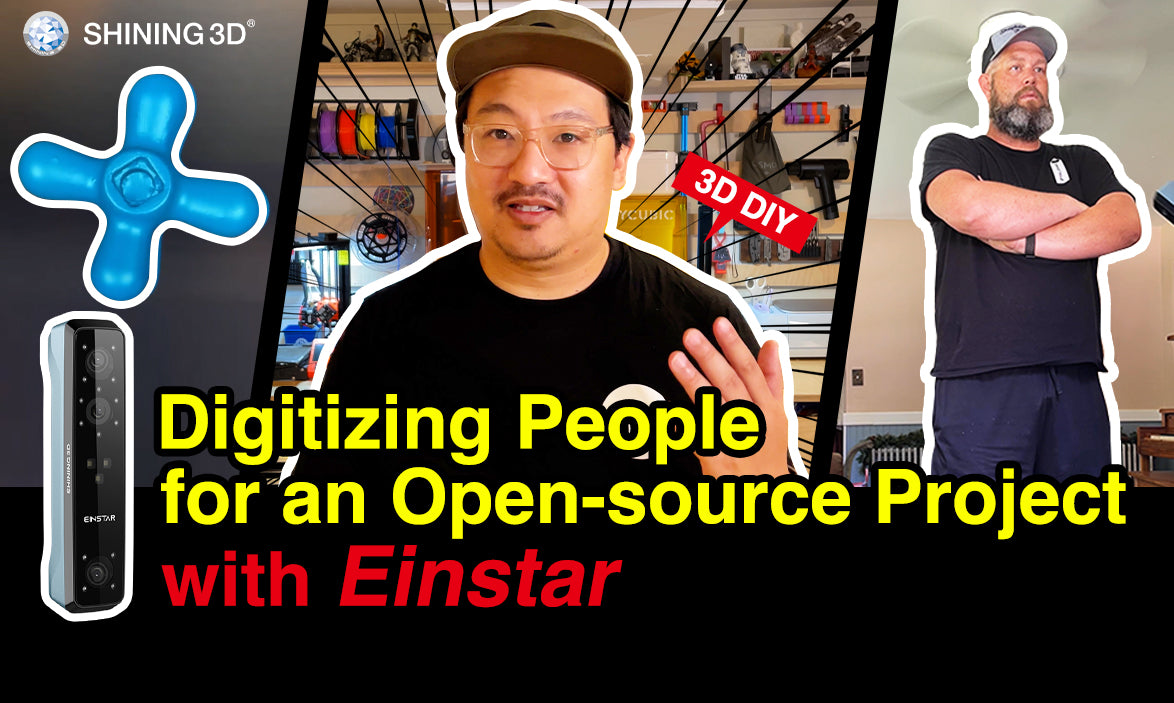We’ve seen how the Metaverse is conceived to be a completely infinite immersive digital world, where the space is not physically material, but a hyper real 3D representation seen through virtual reality. This enables unlimited imagination and creativity not only for the space, but also for ourselves. Could you imagine seeing your real self in a virtual space? Will Huff has made this true with the Einstar 3D Scanner.
About Will Huff
Will Huff has been working as an effects artist for the motion picture industry more than 30 years. In 2015, he started a robotics company called “Robomotics” which focuses on robot-human interaction. In both industries, he requires 3d digital tools to create assets. “In my pipeline, I have the need to capture the real world and brings those objects into the digital realm. These tools might include photogrammetry, light, AR and even 3D scanners. But what would be the purpose of you utilizing these tools?”. Will decided to explore a real example: The Metaverse.
Process and aim
The process followed by Will Huff starts with 3D scanning and posterior analysing of the scanned model in Unreal Engine and ends with a great customization for the Metaverse in Metahuman.
The main objective with this process was to have a 3D scanned model that has the real data from the scanned person and then to be able to customise it and transform it into a playable avatar for the Metaverse.

1st Step – 3D Scanning
The first step was to 3D scan the person’s head. Will scanned keeping an eye on the monitor to see the data he collected and once he had enough data he started scanning the body. In this case, the body scan was made as a reference to create the posterior model. Then, once he had both scans, he imported them into Zbrush and prepared the scans for Unreal Engine.

“Basically, what I'm doing here is separating the hair from the face and cleaning up the hair and making the top of the head smooth.”

Side by side comparison.
2nd Step - Unreal Engine Analysis (with Metahuman Identity)
Once imported into Unreal Engine 5, Will started a Metahuman plugin called Metahuman Identity. This plugin enables key features identification as the eyes, the lips and the cheeks. It was important to make sure that the Metahuman guides lined up properly with the topology of the model. Then he used the identity solve to shrink-wrap a Metahuman head and made sure that the topology was matching. The Metahuman software is still in a beta version, so it allows limited options for body types.

3rd Step – Model Customization in Metahuman Creator
Once Will had the model prepared, he opened the web application called Metahuman Creator, where he could start to modify the face. Even though the software is still in beta version, there are a lot of options to customize the model and in this case, Will was working with the 3D data of a real person that he acquired with Einstar.

With this software, he tried to match the person’s personality, explored different hairstyles, makeup and clothing, and after that, some motions that brought the model into action like face expressions.
The final step in this process was to export the model and bring her back into Unreal Engine, where he could bring her to life in the metaverse.
Final thoughts and opportunities
“The EinStar is a great addition to SHINING through these full line of 3D scanners. It's a full featured and versatile scanner based on 18 years of research and development in the field of high precision 3D digital products. The software EXStar is equally impressive, capable of handling large sets of point clouds. There are so many use cases for the AI and star in the metaverse. But you know what? I'm going to leave that for you to discover. ” – Will Huff









Leave a comment
All comments are moderated before being published.
This site is protected by hCaptcha and the hCaptcha Privacy Policy and Terms of Service apply.